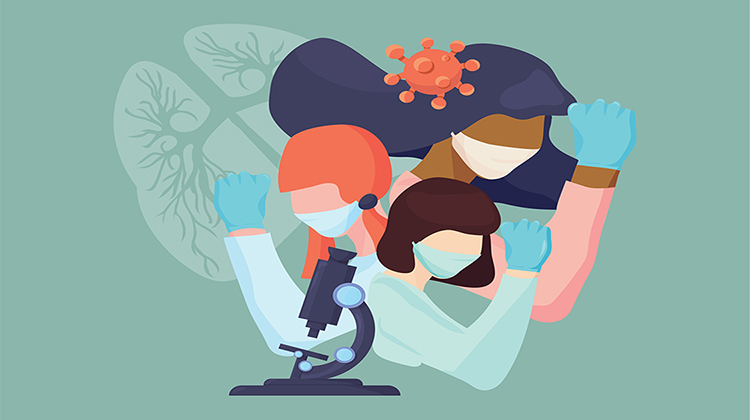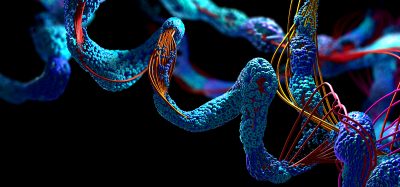Women in STEM with Dr Catherine Sheehan
Posted: 22 December 2023 | Taylor Mixides (Drug Target Review) | No comments yet
In this special December edition of Women in STEM, we are privileged to feature Dr Catherine Sheehan, a distinguished figure whose journey in the field of STEM has been marked by passion, resilience, and impactful contributions. We explore her experiences, challenges faced, and the transformative impact of her work in regulatory and pharmaceutical science and molecular biotechnology.

Can you tell us about your journey in the field of STEM and the challenges you encountered along the way?
My journey and interest in STEM began initially because of my secondary school Biology and Chemistry teachers. Both were woman teachers who were passionate about science and very good teachers to boot. I attended an all-girls secondary school in Ireland which strongly encouraged us to study STEM in both secondary and third-level education. Perhaps I was sheltered from societal stereotypes and biases, as in this environment, I felt very confident taking STEM classes. As a result, I was very well prepared when I entered university to study science.
What inspired you to pursue a career in STEM, and how did you overcome any obstacles or biases you may have faced?
While at university, I was lucky to have great professors in the subjects that I studied – chemistry, biochemistry and microbiology. Few women pursued STEM degrees during the 80’s in Ireland, but I was very fortunate to have attended a secondary school with a very strong science program for girls. My secondary school chemistry teacher had a PhD in organic chemistry, and I found her classes and lab experiments to be very interesting, especially those in physical and organic chemistry. Topics I remember best were the terms and concepts I learned such as structure of matter, chemical reactions and equations and the associated problems, in addition to stereochemistry and thermochemistry.
Could you share an example of a specific project or research that you have worked on and the impact it has had in your field?
I obtained two master’s degrees from the Johns Hopkins University — one in regulatory science and the second in molecular biotechnology. The regulatory science project I pursued for my first master’s degree titled, “21st Century Pharmaceutical Excipients: Consequences of a Global Supply Chain and Lack of Excipient Regulations” aimed to draw attention to the risks created by the lack of sufficient oversight of the pharmaceutical excipient supply chain.
Excipients, or inactive ingredients in a drug formulation, are critical components. They represent up to 90 percent of a drug formulation by mass/volume and serve important functions, such as disintegrants and sobulising agents improving stability and increasing bioavailability for targeted drug delivery. However, there is so much focus placed on the quality of active ingredients in the complex pharmaceutical supply chain, that the quality of inactive ingredients is, at times, overlooked. This is evidenced by the continued deaths, starting in 1937 and continuing as recently as this year, from contaminated cough syrup medicines with diethylene glycol around the world. My work today at the United States Pharmacopeia (USP) is devoted to ensuring quality in the supply of the crucially important excipients used in the pharmaceutical industry around the globe.
While pursuing a doctoral degree in regulatory science at the University of Southern California School of Pharmacy, my dissertation was titled, “Views on global harmonization of pharmacopeial standards: a survey of key stakeholders.” This study surveyed key stakeholders at the organizational affiliation level in the pharmaceutical field to identify their needs and views on challenges experienced because of differences between pharmacopeial standards. Results suggested that most stakeholders view pharmacopeial harmonisation as important and necessary but that the process needs to be more pragmatic, efficient and inclusive. Although yielding limited results, it is clear the stakeholders’ work is utilised and appreciated but that the work should be expanded, and its process simplified. Moreover, most respondents across all stakeholder organizations believed that collaboration between pharmacopeial bodies was very important in harmonizing standards and practices but had mixed views on how successful and effective efforts have been to date in addressing key challenges such as reducing the testing burden, removing pharmacopeial and regulatory differences and implementing good pharmacopeial practices in development of harmonized standards.
How has your research in STEM contributed to advancements or improvements in your field, and what potential future applications or implications do you foresee based on your work?
My research highlighted key stakeholder needs such as the value of reduced compendial testing and the advantages of harmonization across pharmacopeias.
As a woman in STEM, what unique perspectives or strengths do you believe you bring to your work?
I think it is good to have a balance between men’s and women’s perspectives and life experiences, as this diversity of perspectives ultimately contributes to the richness of the research, debate and dialogue.
What advice would you give to young women who are considering a career in STEM but may be hesitant due to societal stereotypes or perceived challenges?
Pursue and commit to your passions and dreams, and don’t give up. It’s good to have a strong support network to help you — such as your parents — and mentors — such as your teachers — who can guide you through your secondary school years and help build strong foundational skills and competencies in STEM. Explore your local library and ask for additional learning tools. You will enter from a position of strength that will provide you with the confidence to exceed.
How do you see the representation of women in STEM changing over the years, and what further progress do you believe is needed?
It is changing for the better, as more women are pursuing STEM advanced degrees; however, once in the profession, the opportunities to advance into senior level positions still remain a challenge for women. I have worked at USP for more than 20 years, and have observed that USP is working to recruit, support and elevate qualified woman scientists to leadership roles.
In your opinion, what can organizations and institutions do to create a more inclusive and supportive environment for women pursuing STEM careers?
I think the formative years (primary and secondary schools) are critical years for instilling a passion for STEM. Providing top-class STEM teachers and mentors is a start that will encourage young girls to pursue their passion.
Looking ahead, what exciting developments or advancements do you foresee in your field of STEM, and how do you envision your own research contributing to those future innovations?
I hope it will continue to raise awareness about the importance of strong regulatory oversight of pharmaceutical excipients and their supply chain and highlight the importance of harmonization of pharmacopeial standards.
About the author
 Dr Catherine Sheehan
Dr Catherine Sheehan
Senior Director, USP
Dr Catherine Sheehan is Senior Director, Foods and Excipients at USP and has been with USP for more than 20 years, where she supports USP’s mission and priority initiatives for strengthening the global supply of quality medicines and foods. These include developing a definitive source of quality USP-NF and Food Chemicals Codex standards and solutions throughout the pharmaceutical and food lifecycles, which include traditional standards, physical materials, and other tools and solutions.
Her responsibilities also include partnering with stakeholders to improve awareness in advocating for adoption of new and up-to-date quality standards and related programs around the globe. Additionally, her role supports international efforts to harmonise high priority excipient monographs as well as the experts who contribute to USP standards development in excipients and food.
Related topics
Drug Delivery, Drug Development, Drug Discovery, Molecular Biology
Related organisations
USP
Related people
Dr Catherine Sheehan (USP)







